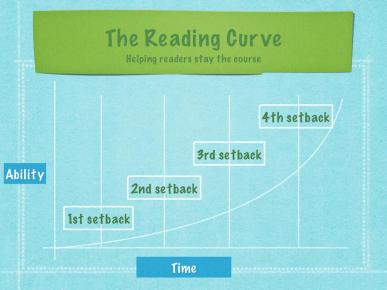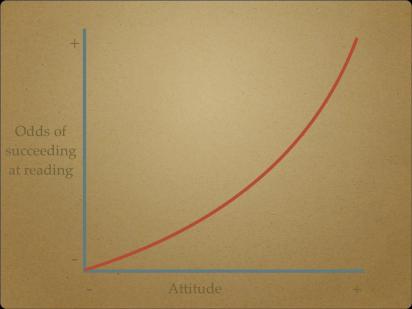It’s always intrigued me how engagement in reading can almost be tracked through secondary school. Obviously not all students follow the same pattern yet the majority of students do. In the graphic above you can see an approximation of students in our school and I’m sure many others.
As you can see on entry to secondary we have the majority of students with a high engagement to reading, especially after the first couple of weeks once we have started using our persuasion and engagement techniques on them.
This engagement steadily increases over the year and through into their second year of secondary school. This is where they hit their peak until we reach yr9, their third year of secondary school. This is where the declines begins. It can be noticed almost straight away in yr9 as hormones and many other aspects start to impress on student’s time and lives.
This really comes to a head towards the time of choosing options through to end of the year when some of those courses begin. This drop just hangs right in there until they hit the GCSE low. Again whether this is because of the issues surrounding time, pressures of study and hormones it is unclear but it is also worth remembering that during this time there are also great success stories.
With students under so much pressure in this age range there are still those that continue to read with passion and in abundance. Yes it’s normally those that you would expect to still be reading however some of these students are new to reading for pleasure and have chosen to escape the pressures within the confines of their imaginations in the world of stories.
Those students though that were on the periphery of reading in the younger years are the ones that are most likely to fall off the reading curve and face this reading dip.their reading was never as solid and firm as those that continue to read and so the ties that bound them to reading in the first place were a lot easier to break.
However there is still hope as those students that found themselves turning away from reading at GCSE have a chance to redeem their reading nature as the enter A levels. With a different type of stress and also importantly a different set of subjects reading can again be seen as sometime that can give pleasure. I talk about the argument that studying texts in English at GCSE actually harms a number of students love of reading. It has been a long held argument that this is the case, and if you talk to students they would seem to imply this also. I cannot truly say whether I believe this to be the case one way or another. I have seen students that have never read a book inspired by their studies and have also seen the best readers beaten into submission through the studying of texts, however I would say that I feel there is a lot more than one simple explanation.
What I do believe is that the role a person who dedicates their time encouraging reading for pleasure plays in maintaining reading and beating the reading engagement curve is vital. A school librarian who takes on this mantel and who understands their role in this is so perfectly positioned and needed if we are continue to grow our readers. It is their job to keep students on the reading curve and to show them the benefits and pleasures that exist in reading beyond study.
It is the understanding outlined in both my hierarchy of reading and reading brain that can really yield results in schools. By following this knowledge and model schools can make a positive impact on their students regarding reading and reading for pleasure. Librarians can be the ones in school helping and leading on this implementation that sustains and creates readers even up against the reading engagement curve that exists.



